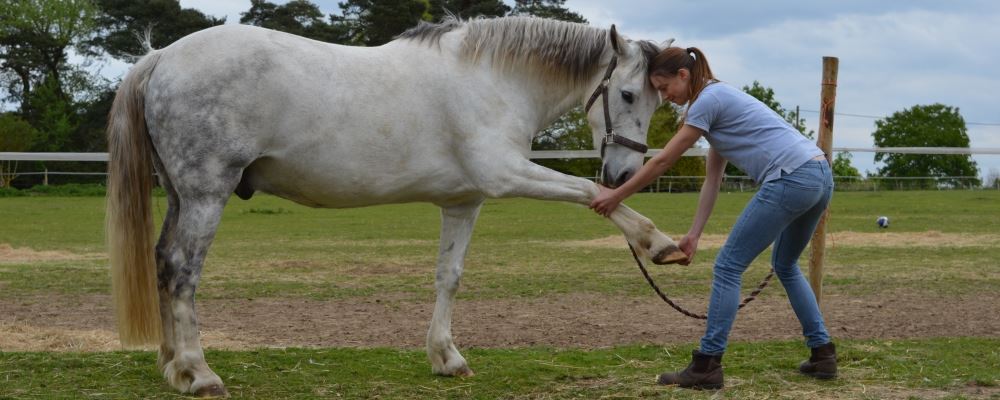There are many options to keeping your horse in top condition—here are three more of the most commonly used techniques.
Myofascial release is a hands-on technique that uses sustained pressure on restricted areas in the horse to eliminate pain. It focuses on the fascia, the web of three-dimensional connective tissue that surrounds every cell in a horse’s body. This technique is also used to restore motion in the horse.
Similar to a spider’s web, the fascia is literally one structure that runs from head to tail in the horse’s body, covering every bone, muscle, nerve, vein and artery. The constant pull of the fascia provides stability to the horse’s body. Healthy fascia is wavy and relaxed; it can stretch and move easily. When there is damage or inflammation, however, the fascia becomes restricted and a source of tension and pain.
Myofascial release treats this fascia dysfunction. The use of sustained pressure on the area of restriction for 90-120 seconds allows the tissues to release. The practitioner then follows the release down the horse’s body to make all tissues soft and pliable once again, taking the pressure off sensitive tissue, and restoring alignment and mobility.
Myofascial release is typically used in conjunction with other modalities to treat horses. It differs from chiropractic care as it does not directly manipulate the bone structure of the horse. It also differs from massage therapy as massage therapy providers shorter-term results by addressing the elastic components of the fascia. Myofascial massage provides longer-term results as it engages the entire fascial system.
Myofascial therapists need not be veterinarians, but many have taken classes to learn techniques. The laws about if they need veterinarian supervision vary from state to state.
Lower-level Laser Therapy

Low-level laser therapy (also known as LLLT, therapeutic laser or cold laser) uses monochromatic and coherent light to stimulate healing in equine injuries. This laser is not the same as thermal or surgical lasers. The use of this modality aids in pain relief, reducing inflammation and increasing the strength of tissues. These lasers cannot damage living tissue.
“Laser” stands for light amplification by stimulated emission of radiation. Lasers supply energy to the body in the form of photons of light, which transmits through the skin and fat, increasing cellular metabolism, which assists in healing
While traditionally known for their ability to heal acute injuries, these lasers also help stimulate the body’s repair processes for chronic conditions. Some of the most common applications for laser therapy include tendon injuries, back issues and osteoarthritis, in addition to wound healing. A laser’s effect is cumulative, and is usually used in conjunction with other modalities.
Some cold lasers are available for purchase with no training (most just have an on/off switch), but it is wise to work with a veterinarian or other practitioner who is familiar with both equine anatomy and the machine. Programmable lasers that have varying power levels typically require classes and a certification to purchase and use.
Osteopathic Care

Osteopathy is based on the idea that tissue that has a sufficient blood supply, nerve supply and lymphatic drainage will be healthy. Osteopathy uses physical manipulation to remove tension and restrictions in the horse’s body, restoring and maintaining health.
Osteopaths use their hands to identify problem areas in the horse’s body, then use gentle stretches and adjustment techniques to manipulate joints to facilitate healing. Osteopathic care in horses is not relegated to the spine; it can also help with stiffness, rehabilitation and chronic conditions.
Osteopathic care is traditionally used in conjunction with other modalities to keep a horse in peak condition. While an osteopath need not have a DVM, they typically work in conjunction with primary care veterinarians, though the laws vary from state to state.
